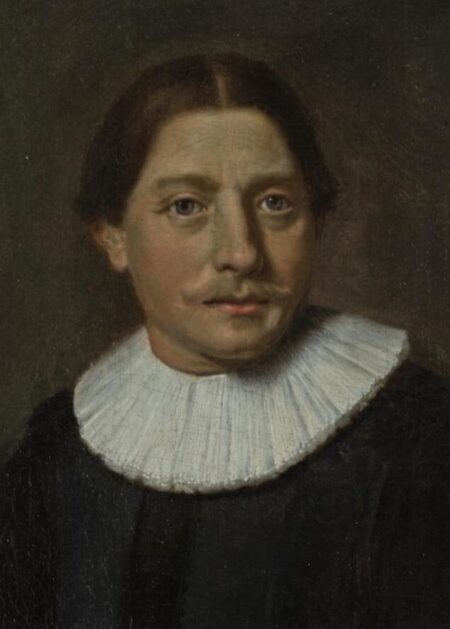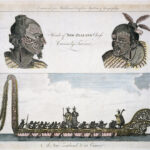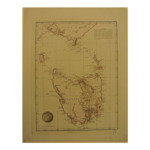Abel Janszoon Tasman
Explorer
Age of Discovery
Quick Facts:
Dutch explorer credited with being the first European to reach what are today known as Tasmania, Australia; New Zealand; and Fiji in the South Pacific.
Introduction
Dutch explorer Abel Janszoon Tasman became the first European to discover what we call today New Zealand, and Tasmania, the island state off Australia’s southern coast. While Tasman’s voyages were regarded as a failure by the Dutch East India Company, he was the first to map and explore the coastlines of these new territories. Tasman’s expedition was also the first to encounter the native Maori people of New Zealand. During a time when much of the world was still unknown, Tasman’s explorations were some of the earliest discoveries of proof of Southern Hemisphere lands.
Biography
Early Life
Abel Janszoon Tasman was born in the small town of Lutjegast, a northeast province of The Netherlands. The exact date of his birth is unknown, but historians agree that Tasman was born in the year 1603. Very little is known about his family or childhood. His parents were most likely of the working class. At that time, most working class children were not educated; however, Tasman was literate when he began working as a sailor. The first definitive information about Tasman’s life prior to his voyages comes from the early 1630s.He married Claesgie Heyndrix, and they had a daughter named Claesjen Tasman, who would be his only child.1 He was living in a poor Amsterdam neighborhood by the time his first wife died. Historical records indicate that he married his second wife, Jannetjie Tjaers, on December 27, 1631, and moved to a more suitable Amsterdam neighborhood. Shortly after, Tasman became involved in the profitable spice trade, quickly rising from the rank of sailor to master of the ship.2 During Tasman’s years in the spice trade, he made numerous trips to the Spice Islands, becoming quite familiar with the many islands that made up the East Indies.
In the spring of 1638, Tasman entered a 10-year contract with the Dutch East India Company. He moved his family to the capital of the spice trade, Batavia, now known as Jakarta, Indonesia. During Tasman’s first few years living in Batavia, he worked as a skipper and acted as second in command on a voyage in 1639 to discover fabled islands that were believed to be located near modern-day Japan. Although the islands were not discovered, Tasman was sent on other trading voyages to what is now Japan as well as Cambodia.
Voyages
Principal Voyage
Tasman’s first significant expedition began in 1642 when he was called by the Dutch East India Company to lead a voyage to explore Australia, or what was then known as the Southern Continent. At that time, the Southern Continent, was a legendary land, still unknown to Europeans. Although other Dutch explorers had confirmed that there was definitely a large landmass far to the south, it had never been explored or mapped. Tasman’s expedition consisted of two ships, Heemskerck and Zeehaen.3 On August 14, 1642, the expedition departed from Batavia. They first sailed towards Mauritius, an island nation in the Indian Ocean off east Africa’s coast, before heading further south. After several weeks of sailing, Tasman and his men first saw land on November 24. They named the land Antony Van Diemen’s Land after the Governor-General of the Dutch East India Company.4 The expedition made landfall at Point Hibbs on the southwestern coast of today’s Tasmania. They did not stay long before setting out again to sail along the southern coast of the newfound territory. When rounding the South West Cape, the expedition was caught in a storm and blown out to sea. When they made their way back to Van Diemen’s Land, they found a bay which they named Storm Bay.
They continued onward, exploring the southwestern coast. The next stopping point was at present-day Blackmans Bay, which Tasman originally named Fredrik Hendrik Bay. While anchored here, Tasman sent a crew member to plant a flag on the land, thus formally claiming the land for the Dutch.5 In early December, the expedition began to sail eastward until they made landfall again on December 13, this time on the northern coast of the southern island of today’s New Zealand. Tasman believed they were sailing along the western coast of the Southern Continent and named the island Staten Landt. They anchored north of what is now Abel Tasman National Park. Here, Tasman and his expedition became the first Europeans to encounter the Māori natives. The first encounter between the Europeans and Māori did not go well, unfortunately. Tasman eventually took his ships, and moved on to continue exploring. After reaching the open ocean again, the ships continued to sail north until they came across several groups of islands. When the men landed on present-day Tonga, they were warmly welcomed by the native people. This led to this island group being named the Friendly Islands. Tasman also became the first European to land on present-day Fiji. The expedition briefly anchored there before sailing westward to return home. On June 15, 1643, the men returned to Batavia. Though Tasman discovered new lands, the expedition was not successful in its goal to discover valuable resources or new trading routes.
Subsequent Voyages
Tasman had not discovered any useful trading routes for the Dutch East India Company during his 1642-1643 voyage; yet, he was sent out again by the Company to discover a sea passage from Batavia to Chile. Tasman was given three ships: Limmen, Zeemeeuw, and Bracq. The expedition departed from Batavia on December 30, 1643. Although Tasman was instructed to first sail east towards today’s Papua, New Guinea, Tasman led the expedition south of New Guinea to sail along the western portion of present-day Australia’s northern coastline. Along the way, Tasman carefully mapped the coastlines and explored the Gulf of Carpentaria. However, Tasman did not sail far enough east to discover the Torres Strait, exactly the sea passage to Chile that the Dutch East India Company strongly desired. Since Tasman believed he could not find the strait that would lead to the sea passage, he led his men back along the coast of New Guinea and back home to Batavia. In August 1644, Tasman returned to Batavia and reported his disappointing results to the Company.
Later Years and Death
After Tasman’s failed 1644 voyage, the Dutch East India Company began to select other men to lead their voyages. After the death of Governor-General Van Diemen in 1645, the Company shifted its interests from discovery and stopped funding voyages to discover new territory altogether. They instead focused on trading routes in the East Indies. In 1648, Tasman was given command of eight ships to sail to Manila, Philippines. They were to intercept Spanish ships carrying silver from their colonies in the Americas, and establish Dutch dominance over the trade in Manila.6 The voyage was overall unsuccessful. Therefore, Tasman returned to Batavia in January 1649. Shortly after his arrival, Tasman was tried and found guilty of hanging one of his men without a trial during his 1648 expedition. He was suspended from his position, and had to pay fines to the family of the man he had hanged. However, on January 5, 1651, Tasman’s rank was reinstated, and he spent the rest of his life in Batavia. He became ill, and soon died on October 10, 1659.7
Legacy
Abel Janszoon Tasman is credited with the discoveries of present-day New Zealand and Tasmania. He charted hundreds of miles of coastline. Although he was unable to discover a sea passage to Chile for the Dutch East India Company, Tasman was one of the first to map the northern coastline of modern-day Australia. His discoveries are still honored today as the island of Tasmania and several spots, such as Abel Tasman National Park in New Zealand, continue to bear his name.
Images
- “Heads of New Zealand Chiefs Curiously Tatowed.” Indigenous people of New Zealand Tasman would have encountered. (The Mariners’ Collection 1937.0842.000001)
- Map of Van Diemen’s Land (The Mariners’ Museum MSM 1—1248)
- Map of Tasmania with counties in outline color. (The Mariners’ Museum MSM 1—1247)
Endnotes
- James Backhouse Walker, Abel Janszoon Tasman: His Life and Voyages (Tasmania: Government Printer South Africa, 1896), 8
- Ibid, 8.
- Philip A. Clarke, Aboriginal People and Their Plants (Australia: Rosenberg Publishing, 2011), 34.
- Ab Hoving and Cor Emke, The Ships of Abel Tasman (The Netherlands: Uitgeverij Verloren, 2000), 16.
- Walker, Abel Janszoon Tasman, 33.
- Ibid, 39.
- New World Encyclopedia, “Abel Tasman,” accessed June 3, 2020, https://docs.google.com/document/d/1kTk0xh2vNcjJ308Cf8XEPE5nhFNXZ01O6sE15T22Cvk/edit#




